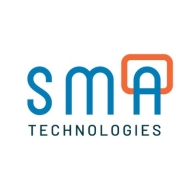

Jitterbit Harmony and OpCon compete in the integration space, with Jitterbit Harmony excelling in pricing and customer support, while OpCon's extensive feature set offers a more comprehensive, automation-focused solution.
Features: Jitterbit Harmony's intuitive design supports scalable solutions for cloud and on-premise deployments, streamlining complex integration processes. It excels with ease of integration through pre-configured connectors to systems like Salesforce and SAP. OpCon provides robust workload automation, highlighted by detailed scheduling, task automation features, and cross-platform communication capabilities.
Room for Improvement: Jitterbit Harmony could enhance pre-configured connector functionalities and expand UI usability for more complex tasks. Improvements in real-time analytics and broader automation features would cater to advanced users. OpCon might benefit from simplifying the initial setup process and enhancing user interface intuitiveness. Expanding integration options could also improve user adaptability and flexibility.
Ease of Deployment and Customer Service: Jitterbit Harmony is recognized for its quick setup and responsive customer support, making it accessible for users with varying technical expertise. OpCon requires a more detailed configuration process, supported by comprehensive support resources and specialized assistance for deployment and maintenance.
Pricing and ROI: Jitterbit Harmony is known for its competitive pricing, delivering significant value with lower setup costs, and faster ROI thanks to shorter implementation times. OpCon’s higher initial costs justify through robust automation, optimizing complex tasks and enhancing long-term operational efficiencies, demonstrating strong ROI over time.


Jitterbit Harmony is a comprehensive platform for data integration and API management, enabling seamless synchronization and automation across cloud-based and on-premises applications.
Users leverage Jitterbit Harmony to integrate systems like ERP and CRM applications, simplifying complex data workflows and enhancing automation. It supports efficient data migration and ensures smooth connectivity, handling diverse integration needs and helping streamline business processes. Users emphasize its drag-and-drop functionality and extensive templates, which contribute to its robust performance. However, improvements are needed in data mapping, error message clarity, and documentation, especially when dealing with large data volumes.
What are the key features of Jitterbit Harmony?Companies across retail, manufacturing, healthcare, and finance sectors use Jitterbit Harmony to integrate critical applications and automate workflows. In retail, it connects inventory systems with sales platforms, reducing manual effort. Manufacturers sync their ERP systems with supply chain software, optimizing operations. Healthcare organizations integrate patient management systems with insurance databases, streamlining patient care. Financial institutions use it to connect accounting software with banking systems, ensuring real-time financial data exchange.
OpCon automates batch processing, core system operations, file transfers, and daily processing. Integrated across Unisys, Windows, and cloud systems, OpCon is used in financial institutions, credit unions, and multi-platform environments for job scheduling, report generation, SQL queries, scripting, and FTP processes, handling thousands of jobs daily.
Users value OpCon for comprehensive automation capabilities, particularly the scheduling feature that allows advance planning and streamlined workflows. The self-service functionality enables non-IT staff to manage tasks efficiently. OpCon's integration with core banking systems, robust job management, and error notification system significantly improve operational efficiency. Features like Solution Manager enhance accessibility and control, ensuring process continuity and ease of use.
What are the Key Features of OpCon?
What Benefits Should You Look for in Reviews?
Users find OpCon complex with a steep learning curve. Desired improvements include better separation of environments, enhanced graphical display, finer user authorization, simpler notification and alerts, more templates, increased web functionality, seamless interface, integration tools, online training, smoother scheduling, better reporting, mobile accessibility, smarter self-service, improved mainframe support, and integration with third-party systems. Pricing model and licensing could be more streamlined.
In financial institutions and credit unions, OpCon is implemented to handle thousands of daily jobs, automate internal processes, and integrate workflows across various platforms. It ensures secure file transfers, generates detailed reports, executes SQL queries, and supports seamless third-party integrations.
We monitor all Workload Automation reviews to prevent fraudulent reviews and keep review quality high. We do not post reviews by company employees or direct competitors. We validate each review for authenticity via cross-reference with LinkedIn, and personal follow-up with the reviewer when necessary.